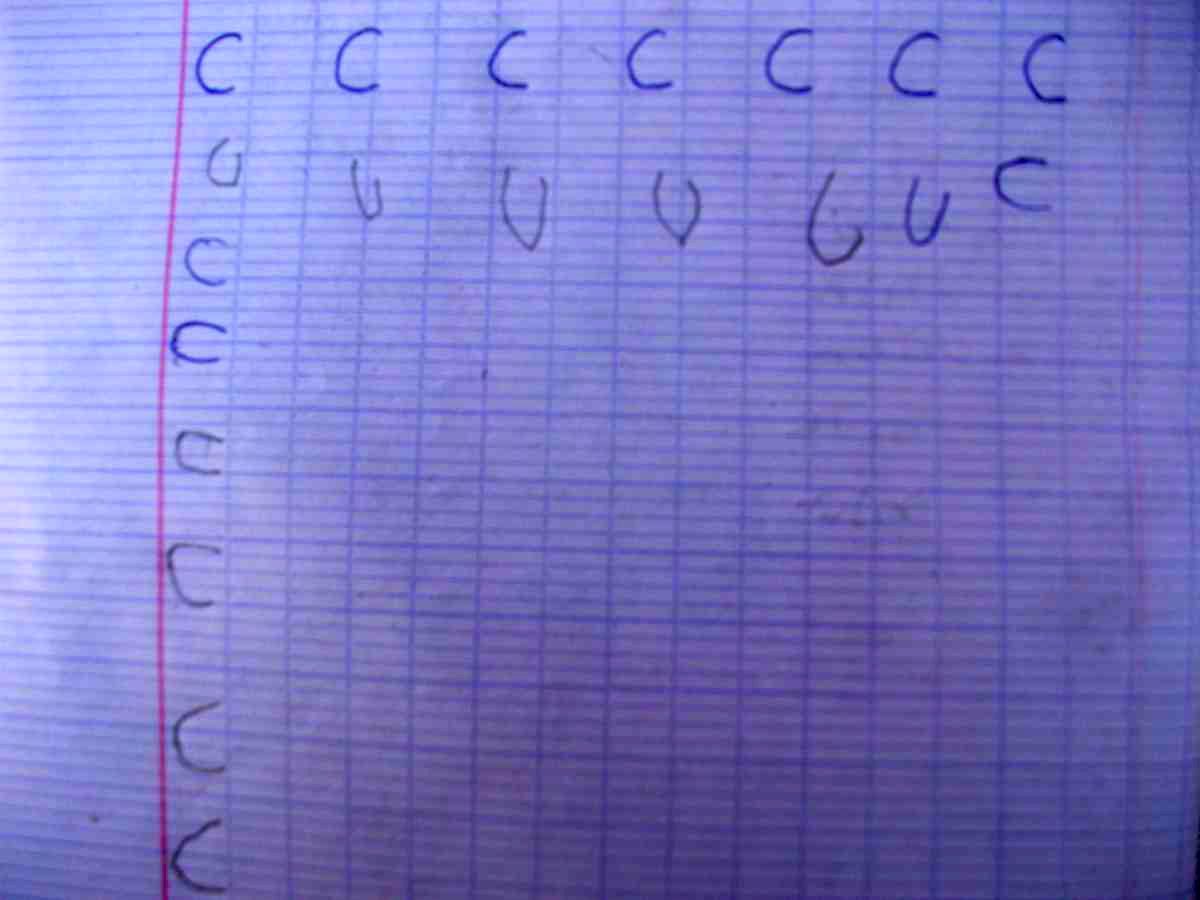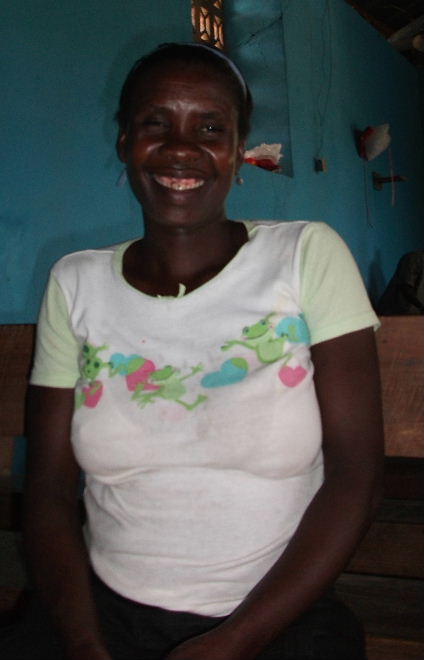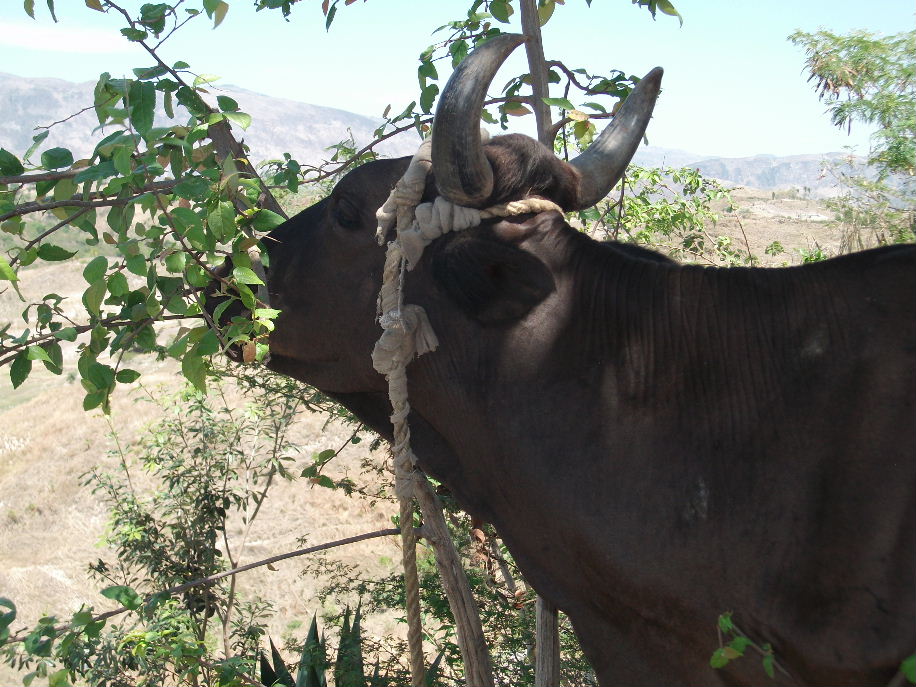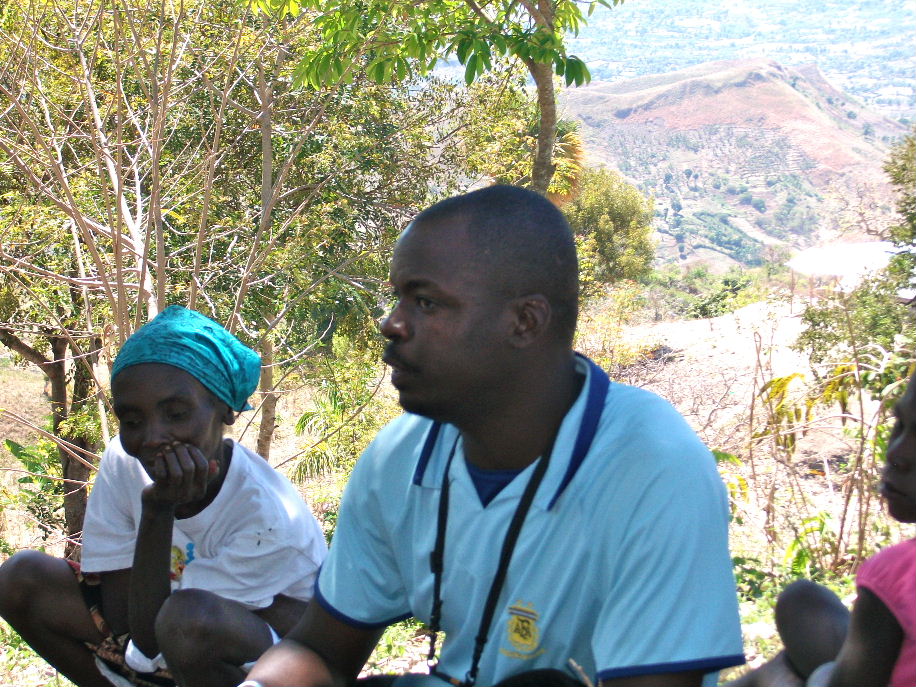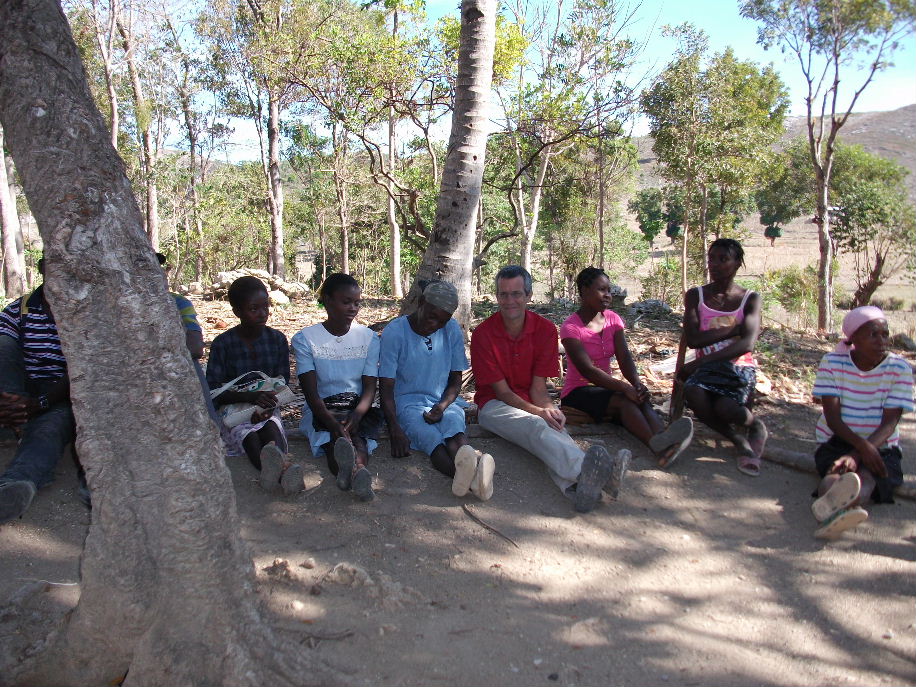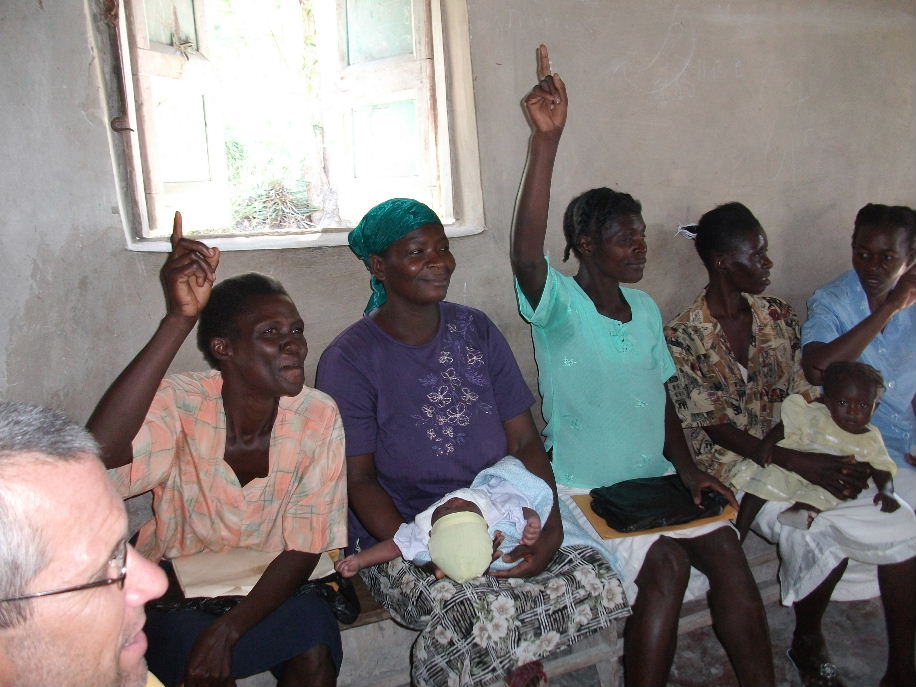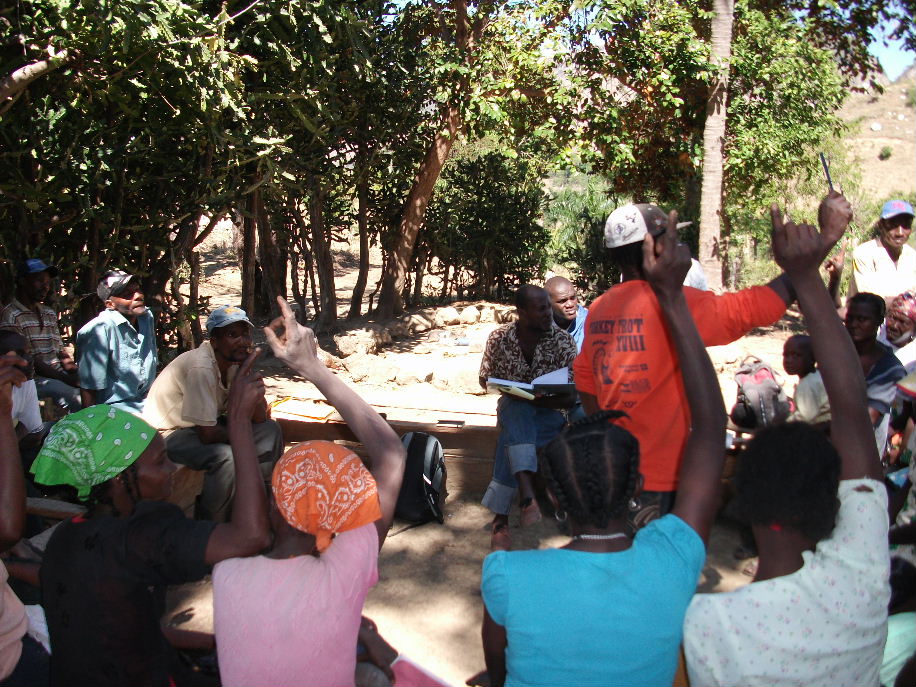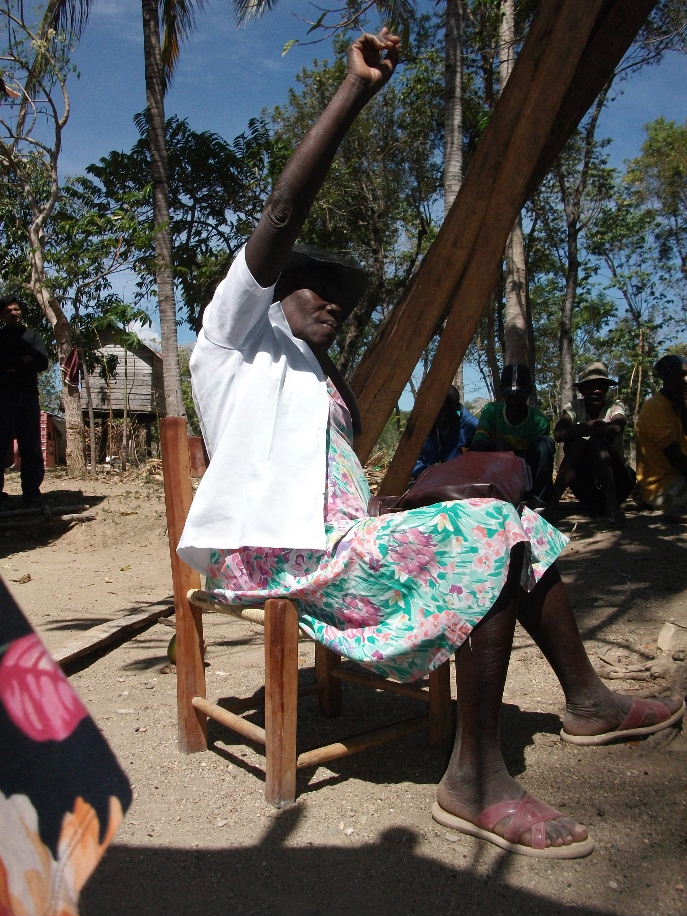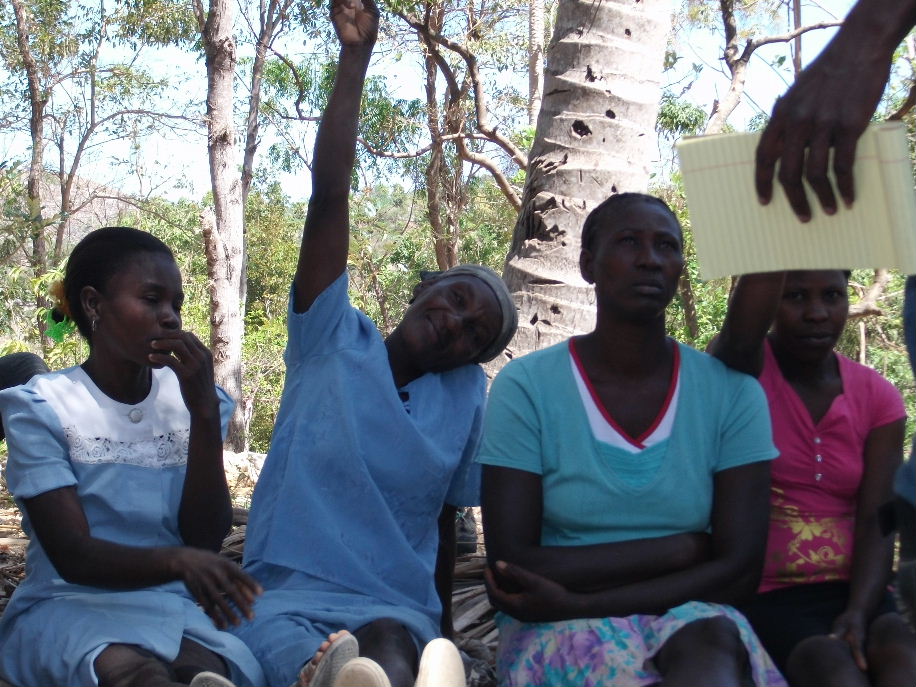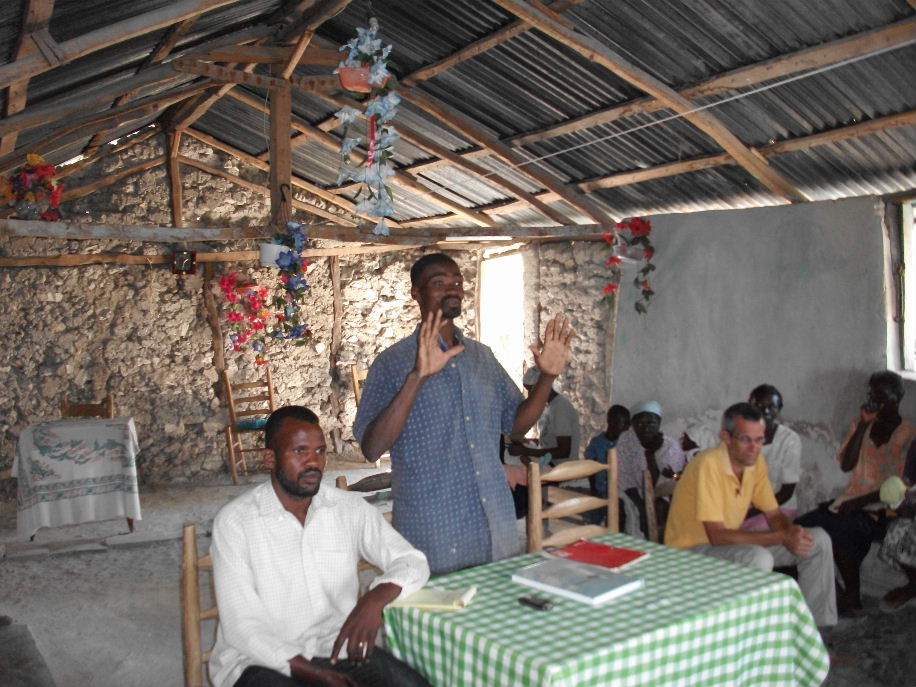To date, CLM has been astonishingly effective. Its job, to help the poorest of the poor permanently improve their lives, would be hard enough under any circumstances. But in Haiti, everything is harder. Problems ranging from the broken or nonexistent infrastructure to the frequency of disasters of all sorts combine to make challenges more challenging and problems harder to solve.
And despite it all, the program’s success rate has been 96%. That is to say, 96% of the ultra poor families that have passed through CLM end up with multiple dependable income sources, assets to insure them should troubles arise, reasonably good health, and a plan to move ahead. Their children eat regularly and go to school.
We have to be honest: We don’t know yet how our dramatic scale-up will affect our success rate. We moved from handling less than two hundred women at a time to ten times that. A number of aspects of the program have gotten even harder as we’ve grown. But we do not expect a significant drop off. We can’t afford one. The cost would be too great. A family whom will fail will continue to face hunger and misery without any concrete hope that their lives could still somehow change. We can’t accept that.
At the same time, as effective as the program has been, it is not uniformly effective. Not in the strict sense. Different women move forward at different speeds. Some take to CLM as though they had been waiting for it all their lives. They jump right in and quickly convert their new assets and their increased know-how into better lives for their children and themselves. Some of them have what seem like intellectual or developmental issues that are severe enough to get in their way. Others seem rigidly resistant to change. It’s not as though they are accustomed to comfortable lives. On the contrary, their lives are terribly hard, filled with persistent hunger, sickness, and suffering of all sorts. But they are resistant to change even though it’s pretty clearly for the better. Or at least it seems pretty clearly better to us.
The international movement of programs like CLM distinguishes between fast and slow “climbers.” I suppose we like to look as the movement out of extreme poverty as an ascent. One thing is certain: the more we know about the characteristics that distinguish fast climbers from slow climbers, the more we can adapt our techniques so that we continue to succeed with almost every family we serve. Staff members who have been with the program for a few years have a lot of stories they can share about the women who made their jobs relatively easy and those who made their jobs hard. But we haven’t really collected our team’s judgments in any organized way. Until now.
For the last couple of months we have been trying to learn some things about how some members, and not others, succeed so well. We’ve been looking at the progress hundreds of new members have made up to the six-month point. We’ve had an Irish intern working closely with some of our case managers to create a simple survey to distinguish fast from slow. And we’ve asked other case managers to categorize each of the members they serve as fast, slow, or something in between.
Now, when you ask case managers which members are fast and which are slow, their first reaction is to ask what criteria they should judge them by. But this very reasonable question misses the point. We don’t yet have the criteria. Appropriate, predictive criteria are what we seek. So the case managers have to work in a manner that seems backwards. They categorize each member first, and then try to define what makes them view the member the way they do. We hope these observations will give us the information that we need.
A lot of what they conclude is predictable. Many fast climbers, for example, have spouses who collaborate with them closely. Many of them take quickly to the social messages that CLM offers: For example, they starting keeping themselves, their children, and their houses clean. They tend to make plans that guide them. Slow climbers lack a steady partner’s support. They lack initiative. They don’t seem very motivated to change.
But even if such conclusions are unsurprising, they’re still useful. We decided to spend more time and energy getting husbands to buy into the program. That might really make a difference.
The case managers’ notes are filled with interesting details.
Here’s what Martinière, a case manager, says about Oclanie, a fast climber: “She keeps her children clean, and she’s learned to write her name. She’s pregnant again, but her husband helps her a lot with her assets. She’ll be able to take care of her husband and kids. Since I started weekly visits, I’ve never shown up to find that her kids hadn’t eaten unless the pot’s still on the stove. When the weekly food stipend ran out, she took the money from her savings account and bought three goats, which she sold right away at a profit.”
Another, Bonissant, says this about Julienne Pierre: “Julienne was a true CLM. She has nine children and had no assets to speak of. Now she has 29,000 gourds worth of animals, including poultry, goats, a pig, and a cow. Her nine kids will be in school in October. She’s learned to write her name and the numbers from one through ten. She’s making quick progress because her husband works hard with her and she really likes both commerce and farming. She’s a fast climber.”
But here’s what he says about Alourdes: “Her social situation is not good. Her home is always dirty. She still can’t write her name even though we’ve been working hard at it. She’s //egare//. She doesn’t know money. Her husband has to keep track of any money that comes her way.” (This requires explanation. “Egare” can mean anything from confused to scatter-brained. “Not knowing money,” means that she can’t identify the denominations of different bills.) Bonissant continues: “She’s progressing very slowly because she lacks good sense.”
Helping women like Oclanie and Julienne is almost easy. They certainly needed us. But they were positioned from the start to take advantage of what we can provide.
Bonissant has his work cut out for him to make Alourdes succeed. He’s already counting on her husband, which is a little bit risky, and he’s getting help from other CLM members that live nearby. Just recently Alourdes went to market with a sack of charcoal for sale, but another member, who also had charcoal, went with her, and made sure they both got the right price.
Alourdes is not our only hard case. Working around the special difficulties she and other women like her present is the key to keeping our success story alive.
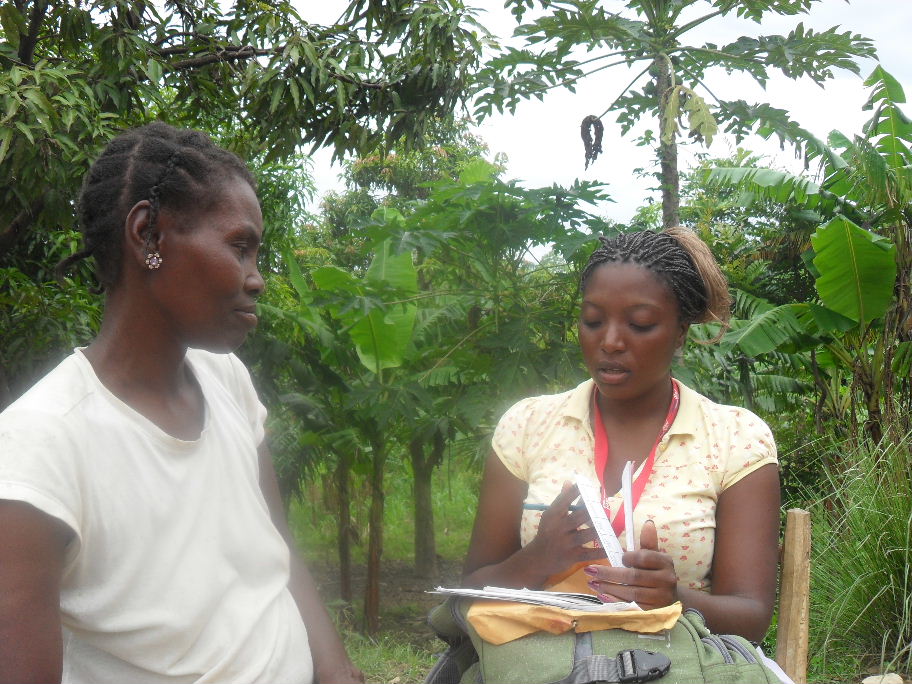 Saliciane and her Case Manager, Alancia
Saliciane and her Case Manager, Alancia
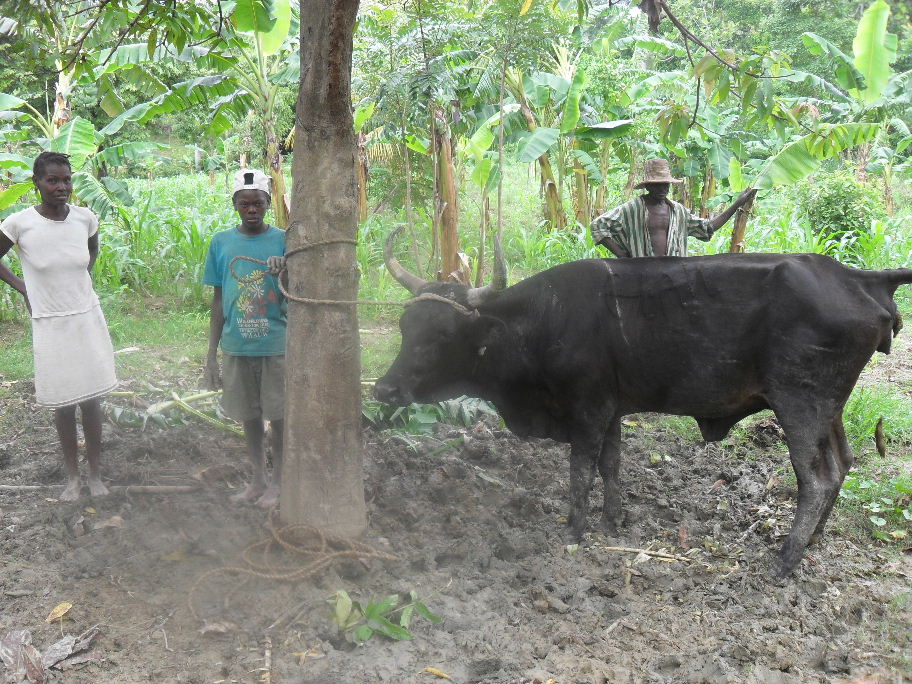 With one of her boys and her late husband, together with their cow
With one of her boys and her late husband, together with their cow